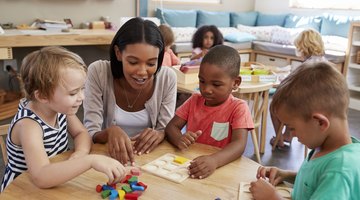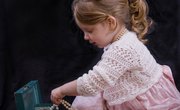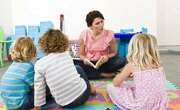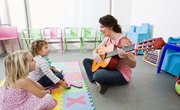Creative curriculum lesson plans are an answer to the demand for ensuring that preschoolers are educated in way that promotes development of thinking. These lesson plans encourage a style of teaching that takes advantage of a child's natural curiosity, and uses it to stimulate a desire to learn. The lesson plans are often well prepared. Yet, they are intentionally vague so you can make individual changes, and observe preschoolers to get further inspiration for teaching.
Themes
A creative curriculum for preschoolers divides the learning into themes. These themes are often organized as weekly schedules that build a foundation in math, science, literacy, social study and art. Activities are organized in all the core areas and this means the theme is explored from a range of perspectives. The line between the areas is not strict, and the aim is to use several different exercise and activities to enforce the theme.
Design an Activity
The lesson plan may include numeracy activity. However, the plan may lack a detailed description of the activity. This allows for using preschoolers' curiosity and designing an activity based upon their questions. Colors are common themes in preschool, and a discussion about the color on a child's socks can be used to count the number of children who have blue socks. Plan counting activities where preschoolers count the number of red books in the classroom, or the number of yellow building blocks in a box. Ask them to suggest things they can count.
Group Activities
By mixing group activities and working in smaller groups and pairs you ensure that each preschooler is provided with opportunities to express himself. During group activities, you plan activities such as songs about the colors in the rainbow. Read stories about colors. The book "Mr. Rabbit and the Lovely Present" by Charlotte Zolotow is an engaging book about colors. Preschoolers may suggest making a present for their grandparents after listening to the story about Mr. Rabbit. Let preschoolers make a small gift using different colors to enhance their learning about colors, for example, use colored clay to make a giant flower. Ask children about their favorite stories about colors. Use a selection of their suggestions or let them choose books from the book display in the preschool classroom.
Individual Activities
Let preschoolers explore the theme in more detail by either working in small groups or individually. Prepare material where they can branch out into areas of curiosity by using art, music, physical activity and drama. Mixing colors is an engaging way to learn about colors. Use different types of paint and crayons, and let them test different ways to make new colors. Skipping or jumping while repeating the colors of the rainbow is a physical activity that makes repetition fun. Let children work in pairs using puppets to describe the color of different objects. Put small plastic toys or pictures in a box, and let them use the puppets to describe the color of the objects. Preschoolers may suggest other things that the puppets can describe, such as the clothes they are wearing.
Related Articles
References
Writer Bio
Asa Jomard began her career as a freelance writer in 2008. Her work has appeared in print and online publications, including Baby Corner. Jomard holds a Bachelor of Social Science in psychology from Umea University, Sweden, as well as a degree in counseling from the Australian Institute of Professional Counselors.











